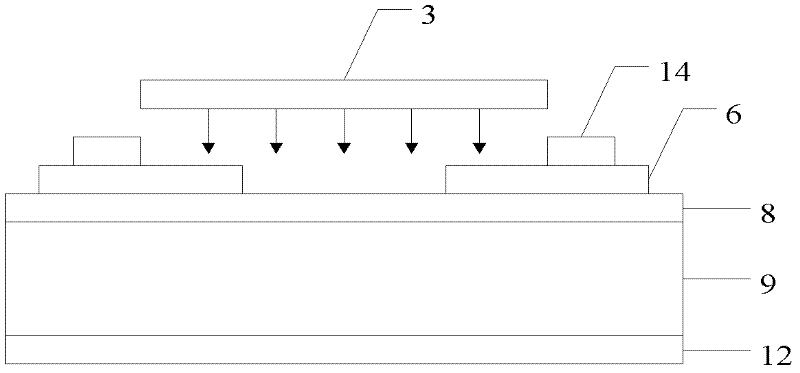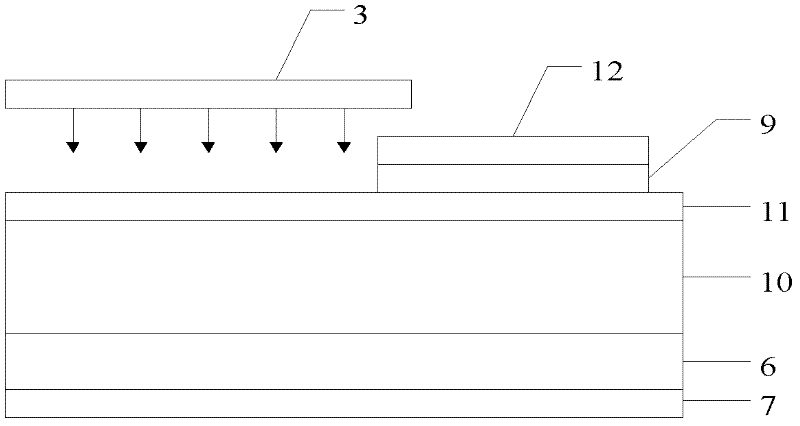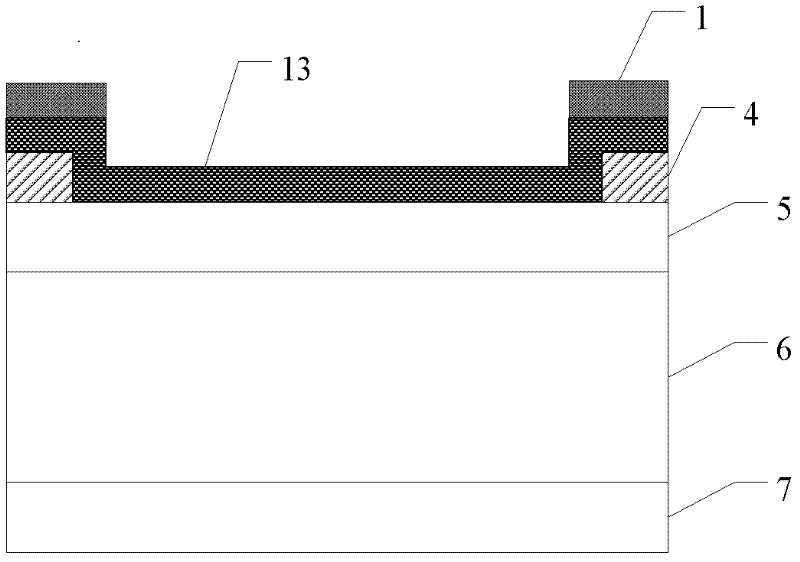Silicon carbide Schottky junction type nuclear cell with vanadium-doped I layer and production method of silicon carbide Schottky junction type nuclear cell
A manufacturing method and technology of silicon carbide, applied in the field of microelectronics, can solve the problems of reduced energy conversion efficiency, small depletion region width, high doping concentration, etc., to improve open circuit voltage and energy conversion efficiency, increase energy conversion efficiency, increase Effect of Large Depletion Region Width
- Summary
- Abstract
- Description
- Claims
- Application Information
AI Technical Summary
Problems solved by technology
Method used
Image
Examples
Embodiment 1
[0028] Step 1, epitaxial n-type epitaxial layer on SiC highly doped n-type substrate sample, such as Figure 5 a.
[0029] The selected doping concentration is 1×10 18 cm -3 Highly doped n-type SiC substrate sample 7, after cleaning, epitaxially grow on the highly doped n-type SiC substrate sample with a thickness of 4um, an initial n-type epitaxial layer doped with nitrogen ions, and its doping concentration is 1×10 15 cm -3 , the epitaxy temperature is 1570°C, the pressure is 100mbar, the reaction gases are silane and propane, the flow rates are 50sccm and 150sccm respectively, the carrier gas is pure hydrogen, and the impurity source is liquid nitrogen.
[0030] Step 2: For a nitrogen doping concentration of 1 x 10 15 cm -3 The initial n-type SiC epitaxial layer is implanted with vanadium ions, such as Figure 5 b.
[0031] (2.1) The concentration of nitrogen doping is 1×10 15 cm -3 The initial n-type SiC epitaxial layer was implanted with vanadium ions, and the vana...
Embodiment 2
[0047] Step 1: Epitaxial n-type epitaxial layer on SiC highly doped n-type substrate sample, such as Figure 5 a.
[0048] The selected doping concentration is 5×10 18 cm -3 Highly doped n-type SiC substrate sample 7, after cleaning, epitaxially grow on the highly doped n-type SiC substrate sample with a thickness of 3um, an initial n-type epitaxial layer doped with nitrogen ions, and its doping concentration is 5×10 15 cm -3 , the epitaxy temperature is 1570°C, the pressure is 100mbar, the reaction gases are silane and propane, the flow rates are 50sccm and 150sccm respectively, the carrier gas is pure hydrogen, and the impurity source is liquid nitrogen.
[0049] Step 2: The concentration of nitrogen doping is 5×10 15 cm -3 The initial n-type SiC epitaxial layer is implanted with vanadium ions, such as Figure 5 b.
[0050] (2.1) The concentration of nitrogen doping is 5×10 15 cm -3 The initial n-type SiC epitaxial layer was implanted with vanadium ions, and the van...
Embodiment 3
[0066] Step A: Epitaxial n-type epitaxial layer on SiC highly doped n-type substrate sample, such as Figure 5 a.
[0067] The selected doping concentration is 7×10 18 cm -3 Highly doped n-type SiC substrate sample 7, after cleaning, epitaxially grow on the highly doped n-type SiC substrate sample with a thickness of 5um, an initial n-type epitaxial layer doped with nitrogen ions, and its doping concentration is 2×10 15 cm -3 , the epitaxy temperature is 1570°C, the pressure is 100mbar, the reaction gases are silane and propane, the flow rates are 50sccm and 150sccm respectively, the carrier gas is pure hydrogen, and the impurity source is liquid nitrogen.
[0068] Step B: For a nitrogen doping concentration of 2 x 10 15 cm -3 The initial n-type SiC epitaxial layer is implanted with vanadium ions, such as Figure 5 b.
[0069] (B1) The concentration of nitrogen doping is 2×10 15 cm -3 The initial n-type SiC epitaxial layer was implanted with vanadium ions, and the van...
PUM
| Property | Measurement | Unit |
|---|---|---|
| thickness | aaaaa | aaaaa |
Abstract
Description
Claims
Application Information
 Login to View More
Login to View More - R&D
- Intellectual Property
- Life Sciences
- Materials
- Tech Scout
- Unparalleled Data Quality
- Higher Quality Content
- 60% Fewer Hallucinations
Browse by: Latest US Patents, China's latest patents, Technical Efficacy Thesaurus, Application Domain, Technology Topic, Popular Technical Reports.
© 2025 PatSnap. All rights reserved.Legal|Privacy policy|Modern Slavery Act Transparency Statement|Sitemap|About US| Contact US: help@patsnap.com



